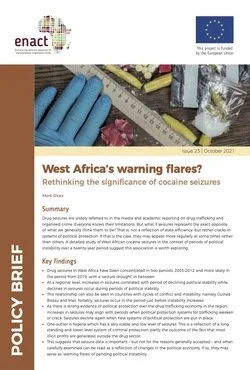By David Restrepo
On August 25th, 2020, a group of Colombian legislators challenged one of the last drug policy taboos left standing since the start of the current prohibition era: they proposed the legal regulation of both coca and cocaine.
The bill, Proyecto de Ley No. 236, unexpectedly passed the first round of committee-level congressional debate in 2021, but was archived by Colombia’s conservative-dominated legislature. Its opponents claimed that legalisation would unleash drug use and a crime wave, kicking the country back to its Pablo Escobarera international pariah status (Colombian Congress, 2021).
Despite its shelving, the bill’s relative success in Congress reflects a growing understanding that, no matter what governments do, drugs are here to stay. If a drug-free world is not an option, societies are better served by making peace with drugs via regulations that help us contain their harms and maximise their benefits.
Sensible drug policy today means leaving behind disproven measures like eradication, crop substitution, drug seizures and incarceration, which do little to prevent “drug addictions”, henceforth referred to as substance use disorders or SUDs. Like child abuse, punitive drug policy achieves the opposite of education. It unleashes highly profitable, powerful underground markets where drug use is promoted and glamourised, and violence and corruption become the business model (Durán-Martínez, 2018). Punitive drug policy channels public and private resources towards attacking rather than helping marginalised populations whose livelihoods depend on the least lucrative and most unsafe rungs of the illicit drug supply chain.
In Colombia, the Amazon basin, and South East Asia, conflicts and economies made possible by cocaine or opioid prohibition do not just victimise people: they are also speeding the demise of mega-biodiverse ecosystems, tugging the world towards the cliff of runaway climate change (McSweeney, 2015). In Mexico and Central America, homicidal drug wars are destabilising democracies and sending out waves of refugees, vulnerable to exploitation and xenophobia even as they attempt to rebuild their lives (Junger & Quested, 2020; Agren, 2020). In Central Asia, illicit opium helped fund the Taliban’s reconquest of Afghanistan, after trillions of dollars spent on the US war on terror (Felbab-Brown, 2021). In the Global North, punitive drug laws reinforce ethnic and racial profiling, turn low-income neighbourhoods into ganglands, and promote the mass incarceration of people of colour (Davis, 2003).
Colombia’s bill does not endorse cocaine use. Neither does it overlook the risk of turning coca and cocaine into for-profit industries like alcohol and tobacco. It is unwise to hand private corporations unchecked control of the plants and molecules that can inebriate and damage our mental health, but also, in the right circumstances, connect us with others, spark our creativity, and even allow us to experience altered states of mind that facilitate personal and community growth (Griffiths et al., 2019). Rather, managing the power, risk and benefits of psychoactive substances demands careful regulatory design that harnesses democratic accountability and knowhow from as diverse an array of human experience as possible.
Colombia’s bill captures the evidence-based perspective that regulations can help contain the self-serving excesses of legal markets. They can delay the age of drug initiation, promote moderation and encourage pro-social norms. They do this whilst enabling the emergence of legal industries that pay taxes, provide legal employment and generate medical and social benefits. If done via controls that prevent publicity and reduce profit motives, regulation can minimise drug-related harms even if drug use were to rise, which is not a foregone conclusion. Overall, welldesigned regulatory regimes for psychoactive substances offer the possibility of a better cost-benefit balance for society than prohibition appears to do.
Colombia’s proposal laid the groundwork for a regulatory architecture that has social justice at its core. It recognised the authority of Indigenous and local government institutions to shape the low-potency, whole coca leaf market, thereby providing an alternative to corporate takeover. This would honour the collective property rights to coca that generations of Indigenous people have fought for, whilst benefitting small coca farmers and integrating beneficial coca leaf uses into society.
Following these equity and inclusion principles could transform coca and cocaine markets from a source of devastation to a potential driver of regenerative, intercultural development, not to mention a form of long-overdue reparations for ethnic and small farmer communities.
The proponents of Colombia’s coca and cocaine regulation bill knew it would likely fail on its first try, but challenging this longstanding taboo could nudge people to conceive another world (Marulanda, 2020). By unlocking the imagination, new strategies might emerge, and this might ultimately change the political balance of power that blocks legal regulation.
This essay seeks to build on that approach. It comments on the bill’s comprehensive proposals: the result of a group of legislators, NGOs, and local communities coming together to condense decades of lessons from Colombia’s drug war trenches. It also imagines what the legal regime would look like from farming to consumption, assessing the outcomes in terms of the potential benefits and costs. The essay closes by exploring insights for overcoming the forces that doomed the bill: a stagnant political economy that sustains the war on coca and cocaine as one of the deadliest and most environmentally destructive of all the drug wars.
London: International Drug Policy Consortium, 2022. 34p.















